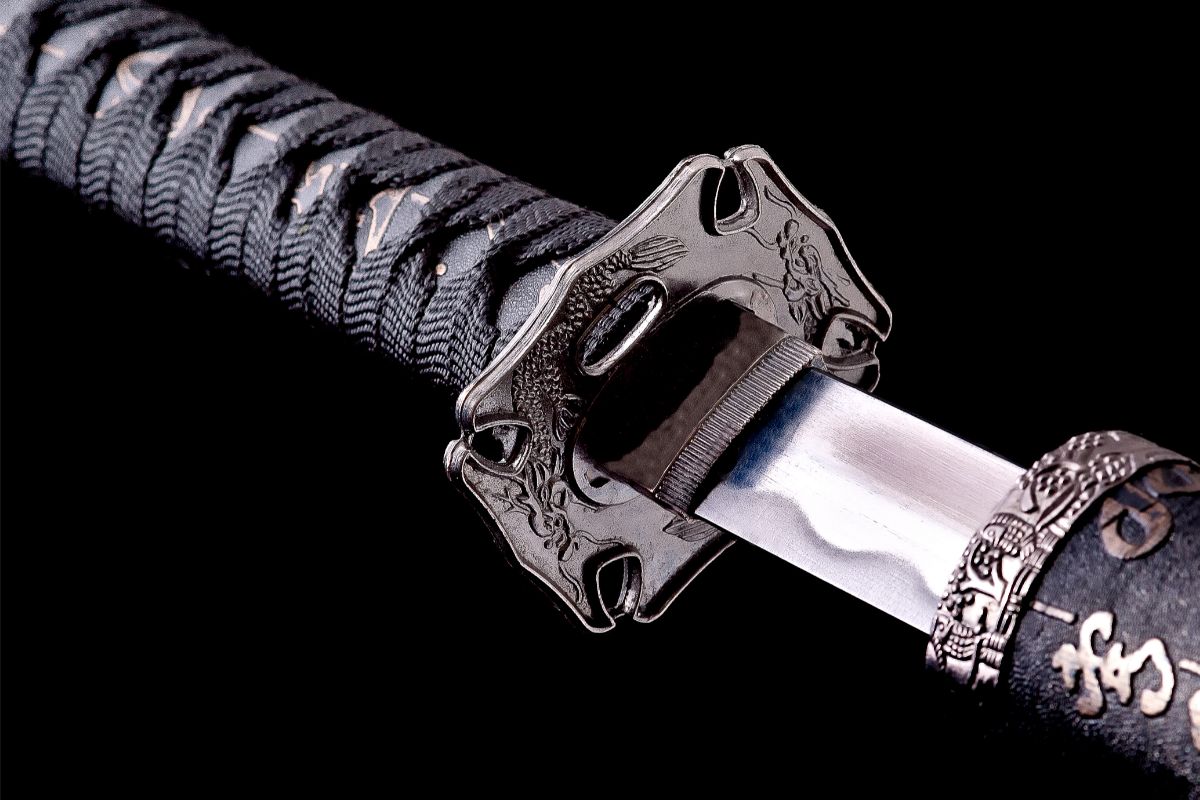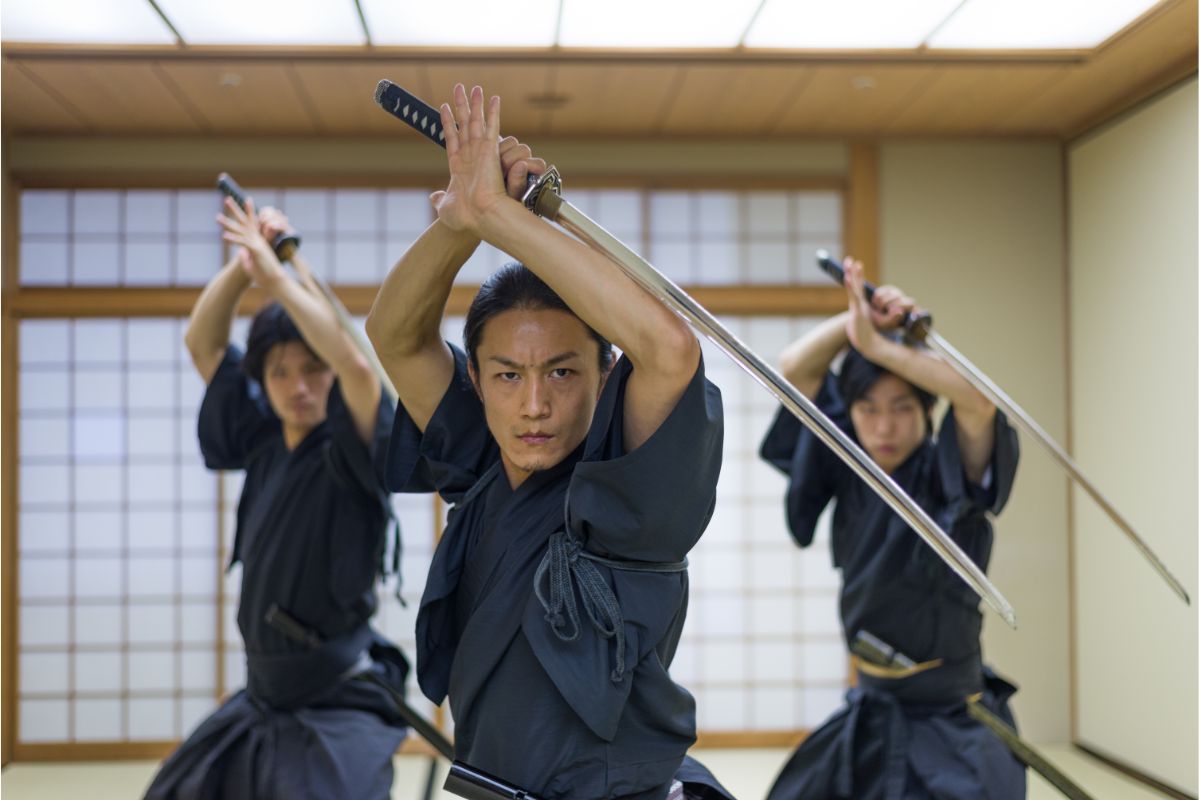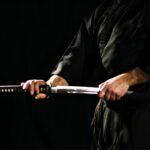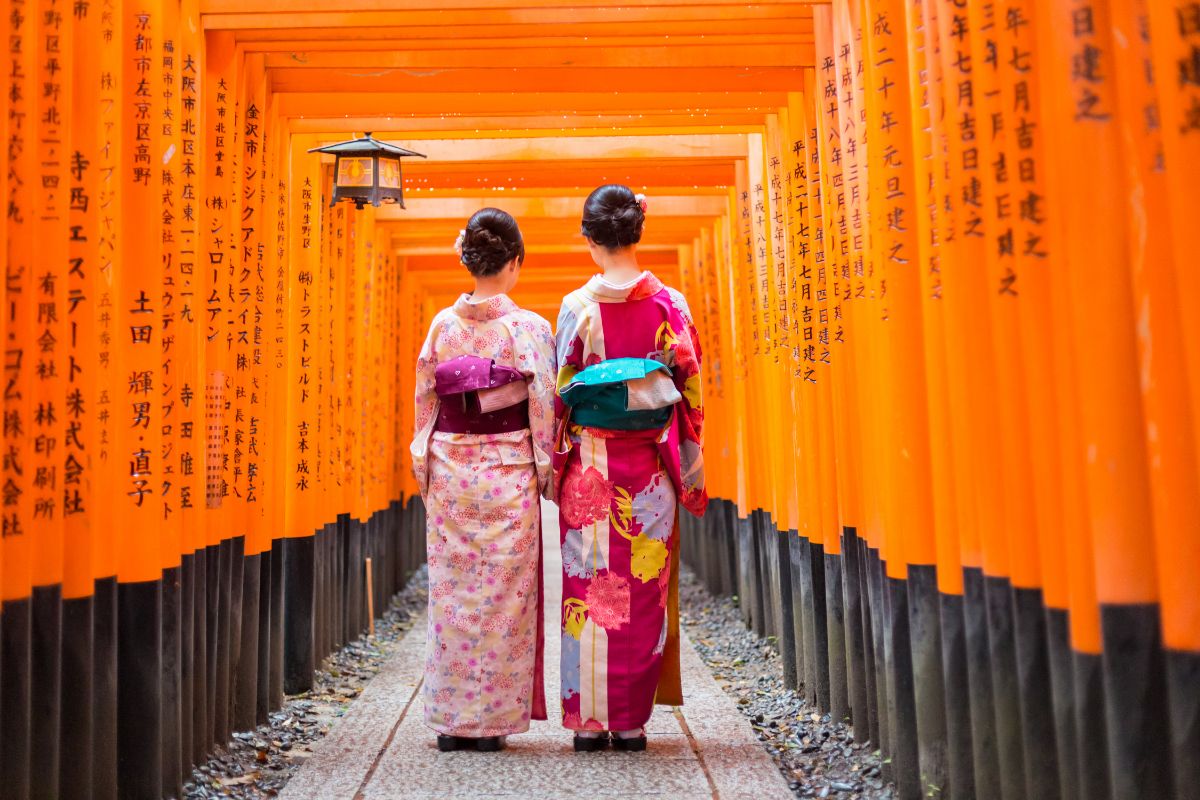The katana is a widely known, and commonly utilized Japanese sword, appearing in countless television shows, films, novels, and comic books. It has become synonymous with Japan, in particular the clans of samurai warriors the country once boasted.
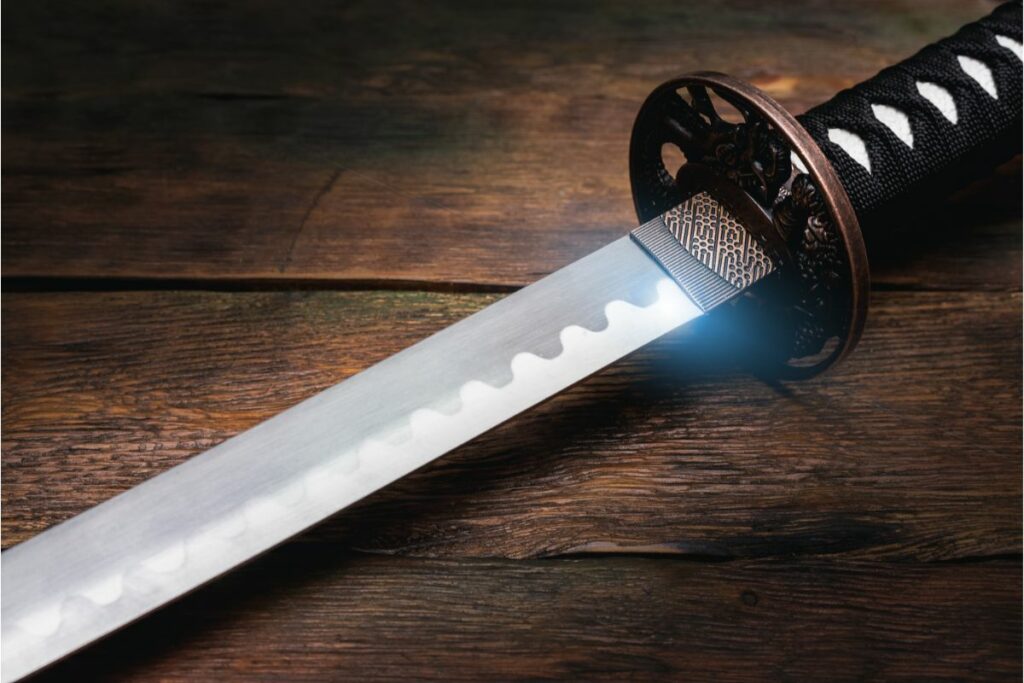
But what is the history of the katana, and how should they be used?
History
Originally named uchigatana, the katana is a Japanese sword, originally created and used by the samurai warriors (see also our article on The Age Of The Samurai) of feudal Japan.
Curved, and with a single edge, the katana is worn with the edge facing upwards, and is used with two hands placed along the long grip.
Etymology
Kata means “one side, or one-sided”, whilst na means “blade”. Similar blades are the tsurugi, a double edged sword, and the daito or dao, which is a longsword equivalent.
Production Timeline
As far as katanas go, their production can be separated into several key eras. These include: jokoto, koto, shinto, shinshinto, gendaito.
Jokoto refers to ancient swords produced before 900 AD, whilst koto refers to old swords produced from 900 AD to 1596 AD.
Shinto refers to new swords produced between 1596 to 1780, whilst shinshinto refers to weapons created between 1781 to 1876.
Gendaito refers to contemporary swords, specifically produced from 1876 to the present day.
How Are They Forged?
Traditionally (and somewhat famously) made using folded steel, a forging process which involves a specialist Japanese steel known as tamahagane being created by layering several different kinds of steel with different carbon concentrations.
This helps remove impurities from the steel, and is done by folding and welding the hot steel, which is then drawn out to form something called a billet, which in its initial form is somewhat curved, but not to the same degree as the finished form.
The signature curve of the katana is achieved through a process called differential quenching and differential hardening, which involves the hilt and the flat edge of the blade being coated in thick clay, whilst the sharp edge is coated in a thinner layer.
This causes the blade to be much harder than the other sides, causes the blade to bend inward in the direction of the flat edge, and renders it both flexible and strong.
This process is generally done between a group of 8 craftsmen, who include: the tosho (blade forger), togishi (blade polisher), kinkoshi (maker of metal fittings), shiroganeshi (maker of the brade collar), sayashi (maker of scabbards), nurishi (applier of lacquer to scabbards), tsukamakishi (hilt maker), and the tsubashi (maker of the hand guard).
Storage & Maintenance
Maintenance and storage are important to the long term effectiveness and lifespan of the katana.
The blade should be stored horizontally in its sheath, with the curve facing down, and the edge facing upward to keep it sharp.
It is important to keep the blade oiled, powdered and polished. This is because the natural moisture on the hands can cause the blade to rust if not properly cleaned after each use.
Similarly, it is also important for a katana to be regularly aired and removed from the sheath to ensure no rust or mold has formed over time.
There are three signs of high quality katanas, consisting of sugata, hada/jigane, and hamon.
Sugata refers to the shape, specifically curvature, length, width, tip, and shape of the sword’s tang.
Hada or Jigane refer to metal patterning. This is achieved through the folding process, and can resemble tree bark or fingerprints when done correctly.
Hamon is the white pattern produced on the sharp edge by repeated quenching and tempering.
Ways To Use A Katana
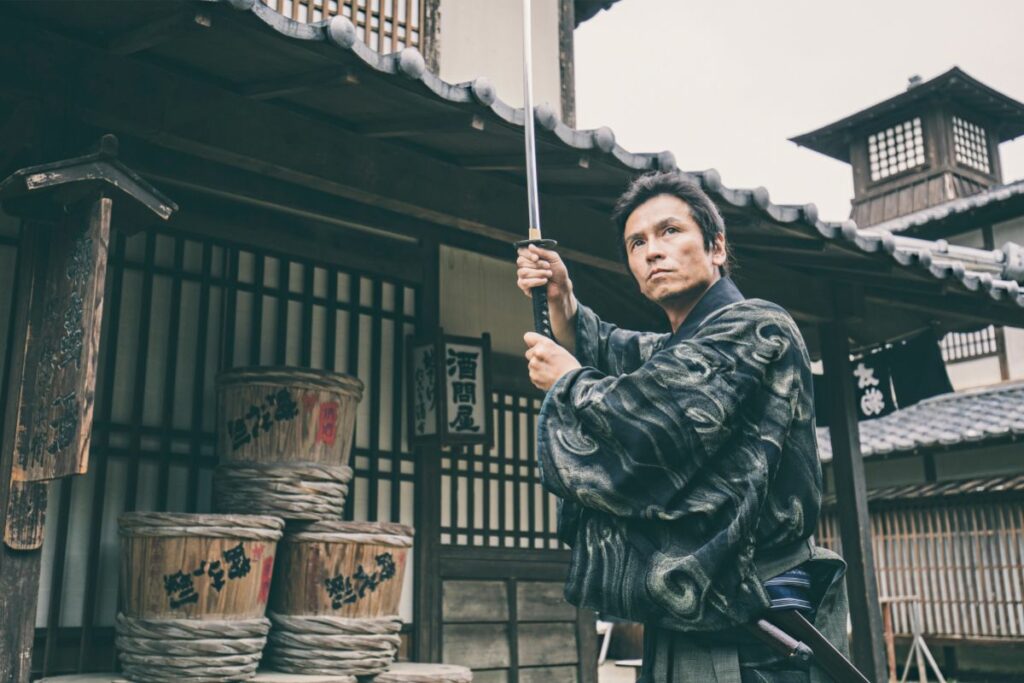
Throughout history, katanas have been used both ceremonially, in combat, and as part of traditional Japanese martial arts.
Martial Arts
Used by samurai during practice and in the battlefield, the katana was part of several martial arts, including: aikido, iaijutsu, battojutsu, iaido, kenjutsu, kendo, ninjutsu, and tenshin shoden katori shinto-ryu.
Perhaps the most widely known of these are aikido and kendo, the latter of which is practiced using wooden katanas made from tied bamboo, and whilst wearing protective armor.
Proper Techniques
First and foremost, the katana is a two handed weapon, and as such the hands should be positioned along the hilt, one atop the other.
The hands shouldn’t be touching, as this will lead to a less accurate hacking motion. Instead they should be parted and loose to allow motion and fluidity.
Feet should be shoulder width apart, with the edge of the blade pointed towards the target. Once you have achieved this stance, there are several attacks which can be performed.
Attacking
The first is a downward attack, starting from above the head (parallel with the ground), and then coming down in a straight vertical motion, moving into the target as you do so.
Another common move is the slashing of the opponent at a 45 degree angle. This can be done from the side for a mid level attack, maintaining the grip on the handle during the follow through so as to avoid dropping it or letting go.
Alternatively, another attack can be performed from down low, rising at a 45 degree angle again, with the blade facing away from you, slashing the opponent on its journey up and across.
Defending
When defending against an opponent, it is important to block with the side or rear of the blade to maintain and protect the edge of the weapon. The metal is thinner on the blade, making it vulnerable.
This can be used to damage an opponent’s weapon whilst protecting your own.
Final Thoughts
And there we have it, everything you need to know about the katana, and the best ways to use and maintain it.
There are plenty of Japanese martial arts out there where the katana is used, and these can be great outlets for physical, mental, and emotional health.
Why not try some yourself?
- 16 Best Websites To Watch Japanese Movies With English Subtitles - May 11, 2023
- Is ZIPAIR The Best Airline For Traveling To Japan? - May 11, 2023
- Ryu Murakami Vs Haruki Murakami – Which One Should You Read? - May 11, 2023


